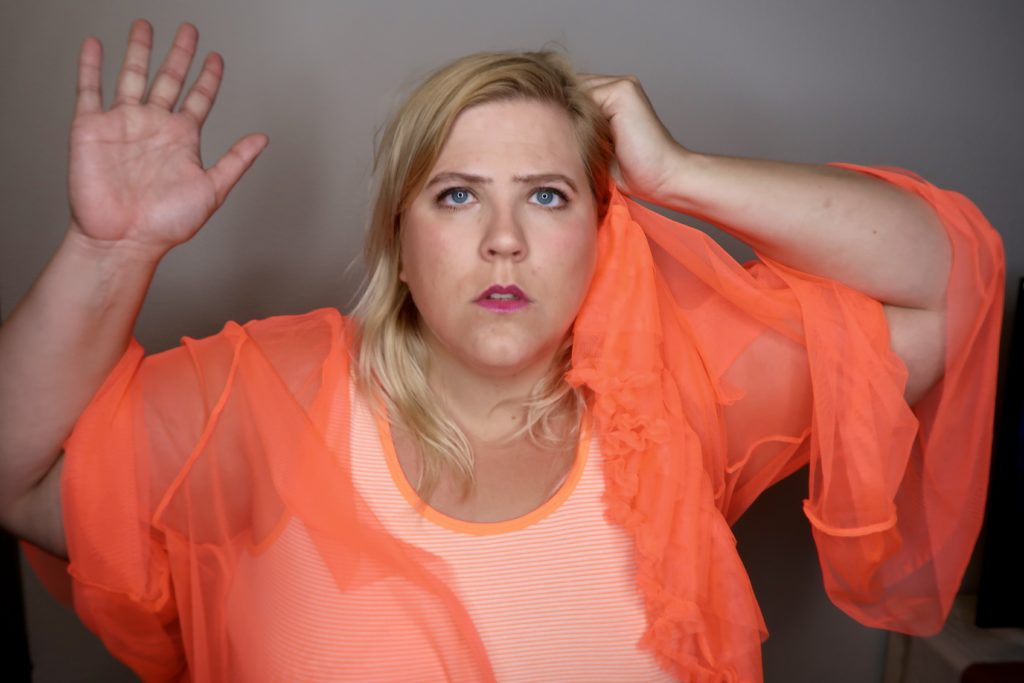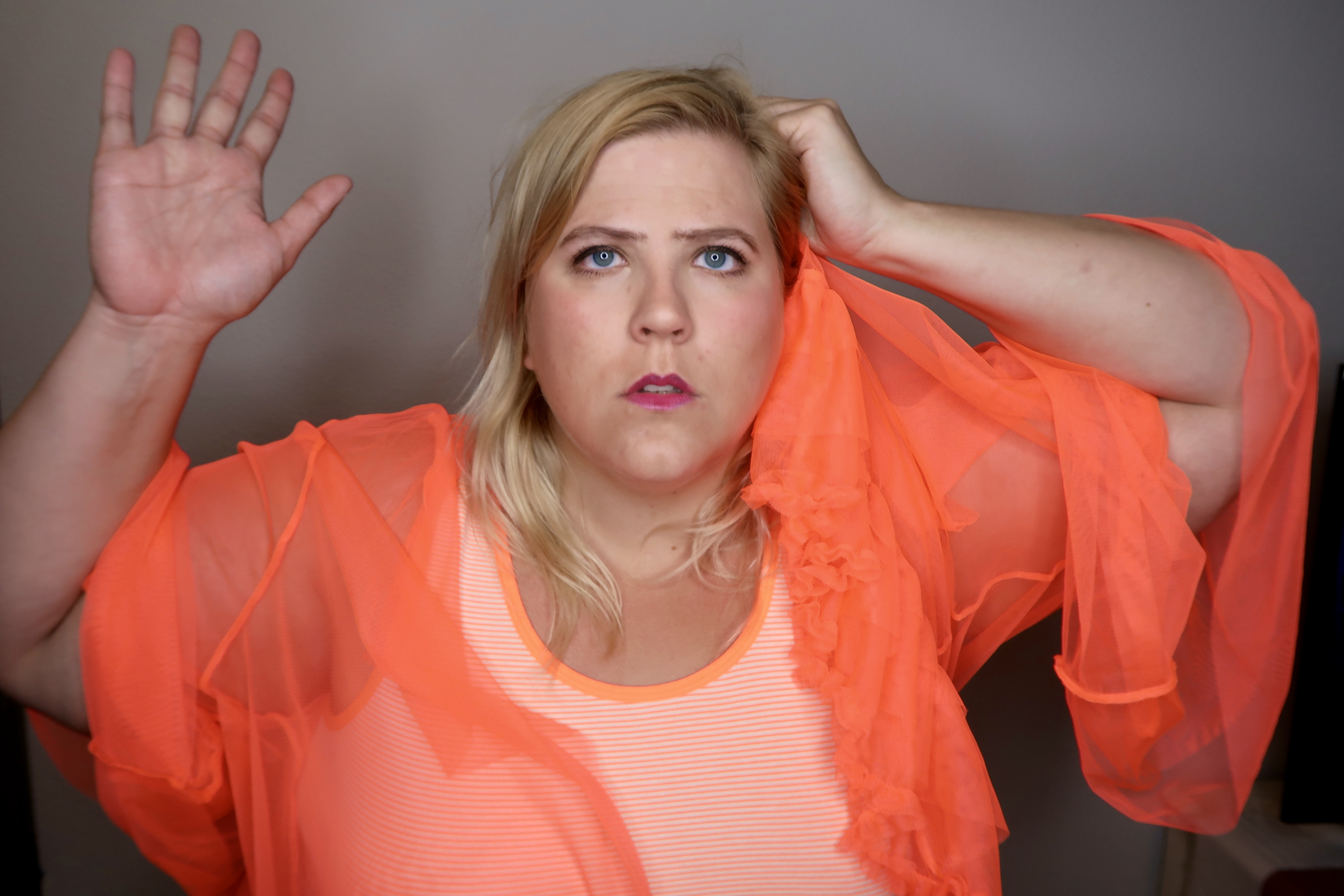
Recently I’ve seen a lot a of discussion about what is and is not “body positive.” I’ve done a lot of research and it seems there are a lot of articles pointing out what is and is not body positive, but very few attempting to explain the movement, why it’s important and what being body positive means. In order to help facilitate debate, educate the masses and also kind of sort out my own thoughts on the subject, I thought I’d take my own stab at it. This is 100% world according to Glitter and if you disagree, let’s talk about it. Because it’s through discussion, movements get solidified and organized.
What is Body Positivity?
For me body positivity is the belief that every individual has the right to exist, in whatever body they have today, tomorrow and in the future without pressure to attain an “acceptable body” or rejection from society if they don’t. In this perspective regardless of race, gender, size, disabilities, health, hair growth and whatever other variant you throw into the mix, a person’s worth and dignity is equal. They deserve the same rights. The same opportunities. The same access to knowledge and experiences. They also deserve the same representation in media and leadership.
What About Self Love?
You’ll note in my definition there is nothing about self-love, because to me body positivity has nothing to do with how much you love your body. Often times people use the phrase “I’m body positive” in exchange for ” I love myself”. But loving your body- even if it isn’t the societal norm- isn’t what body positivity is about. Your own self-love does nothing to increase the access to basic rights for people with marginalized bodies. Sure, the body positivity movement might have helped you find self-love, but they aren’t the same thing.
An important point to also acknowledge is that we often learn to love ourselves, but do not learn to accept and appreciate others. If you love yourself and judge someone else’s body, that is counter to the culture body positivity is trying to create. In line with this thinking, if you try to create any type of boundaries on which bodies deserve respect (the classic, ” I’m all for body positivity, but…” phrasing) you are actually hurting someone’s ability to exist freely in their body. In this regard, it’s totally possible to have self-love and not be body positive. They are decidedly different things.
What is Diet Culture?
Right now, there is a huge effort to re-purpose the political side of body positivity and use it sell things, primarily to women. You’ll often see body positive bloggers talk about “diet culture” or the idea that people are taught they need to constantly be trying to achieve the idealized body type. Now if you choose to go on a diet based on your own goals and ambitions or health- that has nothing to do with body positivity. It simply means you’ve made a decision to change your body and that’s really no one else’s business. However, if you write a post about how to lose “13 pound in 30 days” to be your “sexiest self” that is anti- body positive. Why? Because you’ve associated a change in your body (losing 13 pounds) with having a body this more accepted by the community (sexiest self).
Why is Representation Important?
Seeing different bodies and elevating images of different bodies is important because it creates a new norm. There was an experiment on racism- If you held up a flat picture of an unknown black man in front of a white person, the sections of his brain committed to anger and fear would fire. However, if you normalized the black man by giving him thoughts and feelings or showing him performing an everyday activity, the white brain would then show significantly less firing in these regions and expanded action in parts of the brain used for comprehension and compassion. The study found that one of the ways to decrease racism to was to integrate and educate different races about each other. Ignorance and avoidance were keys reasons for unnecessary anger.
Representation in the body positive movement is needed in the same way. If we can show all sorts of bodies doing all sorts of things to the world, the more comfortable and less fearful the general public will become of them. The opposite is also true, the less we see different body types, the scarier they become.



This is a wonderful explanation of body positivity! Thank you for taking this on!
So clear! This is great, as always
You nailed it! Thank you for sharing, I will be sending many to this blog!
❤
Yes! The more we humanize humans-body types-races-even criminals, the better off we all will be at earasing what have been subconsciously taught!
Great info. I don’t think people are afraid (see your last paragraph) I just think people are not tolerant and are often ignorant. And they try to push their ideals and views on others.
In following you, I’ve seen people comment to you that you “aren’t athletic” or some such nonsense. You run, hike, do yoga and dance. People need to get beyond how others look or don’t look and just treat everyone how they wish to be treated. Be nice people!
PS looks like you had a great time on your cruise! Keep posting. You help so many people!
This is a great companion piece to complement the dialogue happening within the BoPo community at the moment. ❤️
I love the differentiation between body positivity and self-love, and I also think that characterizing the rejection of fat bodies as fearful behavior is fair. I think we’re a lot more affected by fear than we like to believe.
I have been thinking that someone who is trying to change their own body can’t fully accept other bodies that don’t look something like the body they aspire too. Still thinking about this, cause it might be just true for me. Until I stopped dieting and moving my body for reasons other than because I want to–meaning I feel like it or it’s for something fun, I couldn’t really appreciate the amazing variety and versatility of the human body. When you’re comfortable where you are and in your skin you can look at other humans in freedom and see them right where they are without thinking or saying what they should be or do.
Please do a follow up on this! This was everything and spot on.
Love this post, thanks for linking it on insta!
Im so glad I found you on youtube today. I am pear shaped 250, but I began knowing I was sexy in my mid 20’s. I am 40 now. I was at a function last night, and I felt beautiful, loved my outfit, was happy. Then there was a picture posted on facebook of me in a crowd with other people. I thought I looked huge against the other people, not the way I felt at all. Im so confused.